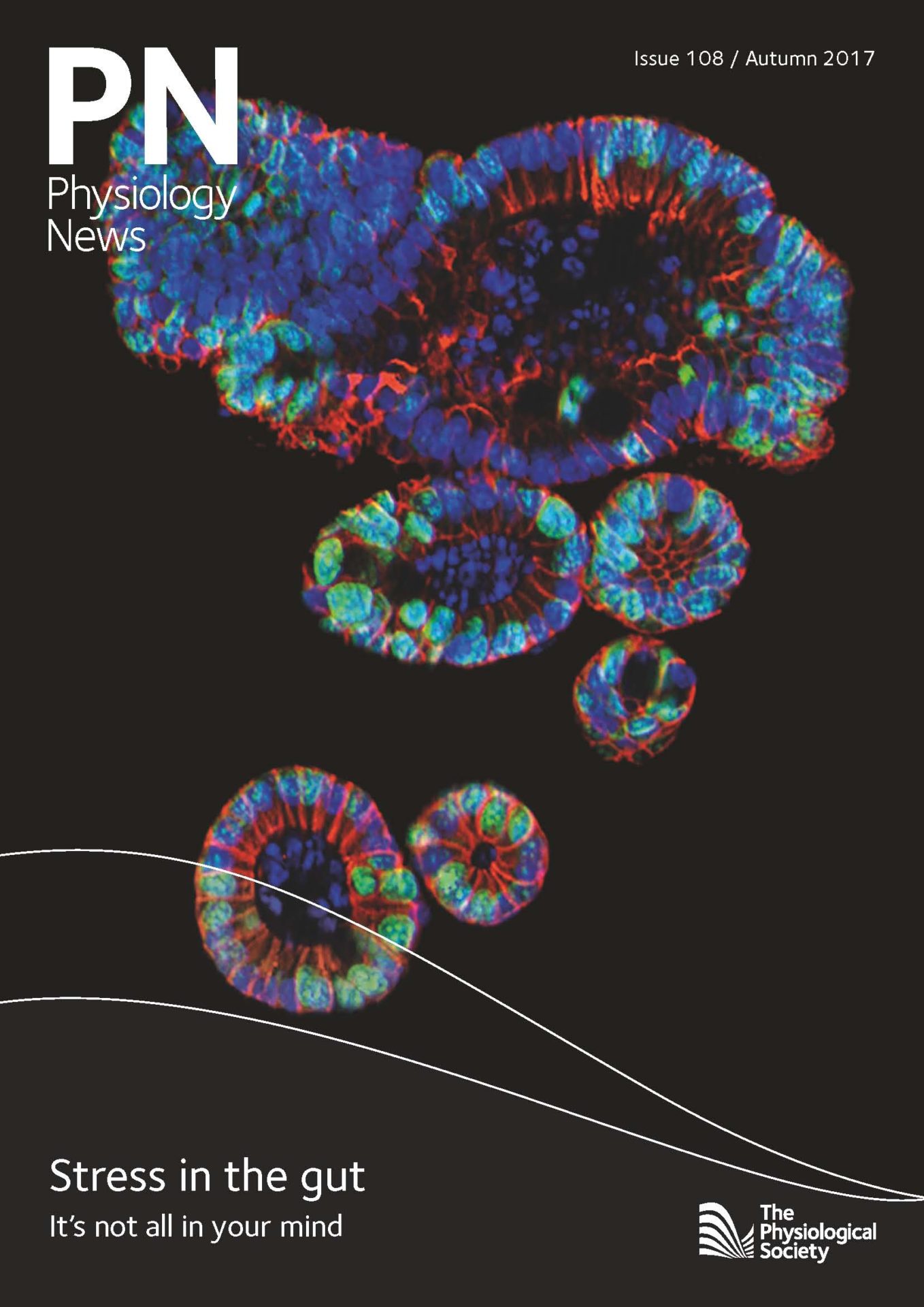
Physiology News Magazine
The Physiological Society Annual General Meeting 2017
Events
The Physiological Society Annual General Meeting 2017
Events
Roger Thomas
Scientific Editor, Physiology News
https://doi.org/10.36866/pn.108.20
12 July 2017,
Wellcome Collection,
London, UK
Since there was no UK or Irish main meeting this year, the AGM was held in the luxurious but chilly Henry Wellcome Auditorium underneath the Wellcome Collection building in London. The seats were upholstered in four different shades of purple. Jonathan Ashmore was elected as AGM Chair, and after approving the 2016 minutes and remembering deceased members he announced the names of the three new trustees (Charlotte Haigh, Elizabeth Sheader, and Stefan Trapp) elected by the 161 members who actually voted. The numbers of votes cast for each candidate were not given. He then thanked the outgoing members of Council and announced the three new Honorary Members of The Society: Peter Raven, Michael Kane, and Terje Lomo. The President, David Eisner, then drew our attention to items from the 2016 Annual Review, which had been sent to all members, and announced that the next main meeting (and AGM) will be held from the 14 to 16 September 2018, at the QEII Centre in London. He was followed by The Society’s new Chief Executive Dariel Burdass, talking mainly about our future plans. These were aimed at ensuring that physiology is flourishing. There will be a focus on under-represented areas. The Massive Open Online Course (MOOC) in Physiology will be launched in September, and our policy and public engagement programmes will be strengthened.
The Hon. Treasurer Anne King then made her last presentation of the 2016 Accounts. Income had risen by 10% or £390k, but expenditure had increased too, by 11% or £440k. Assets had increased, and investments had performed well. Indeed she had enjoyed her term as treasurer and felt that all was well with The Society’s finances. Finally she announced that the membership subscription rates did not need to be increased. Her successor is Frank Sengpiel.

Following changes to the articles of association, we then were asked to consider a motion proposed by David Wyllie and supported by many members from Scotland. This proposed that any future General Meetings not part of a main (scientific) meeting should be broadcast, with arrangements for members to participate remotely. Their view was that meetings were too expensive for members to attend in person. We were told that such an arrangement might cost The Society at least £8k. After a brief discussion, however, the motion was put to the vote, and passed with no votes against it. When I spoke to several Members present following the AGM they expressed regrets at the lack of a main meeting associated with the AGM, but the original decision not to have such a meeting was agreed by a majority of the members consulted.
After the rare excitement of an actual vote, the meeting heard presentations about The Society’s four publications. The Editor-in-chief of The Journal of Physiology, Kim Barrett, reported that it registered over 3.5 million article downloads in 2016, and was available at 5390 institutions worldwide by subscription or licence. It was available also at 7711 institutions in developing countries thanks to the publisher’s philanthropy. It was number one in Eigenfactor score in its subject area. In short, it was a very successful journal and still refused to impose page charges. Kim reported that she had participated in an ‘Ask Me Anything’ session on Reddit, and had enjoyed it much more than she expected. Mike Tipton reported that Experimental Physiology had recently restructured its Editorial Board and has an increasing number of full-text downloads. The Society’s newest publication (jointly with the American Physiological Society) Physiological Reports is doing remarkably well as reported by Susan Wray, who is soon to step down
as Editor-in-chief to be followed by Tom Kleyman. Most of its papers are submitted as transfers from other journals, but last year there were over 100 direct submissions. The fourth publication is Physiology News, in which you are reading this report.
The AGM overran its allotted time by 15 minutes and was followed by a tea break in a nearby room in which posters by selected affiliate members were displayed. There were then four oral communications by affiliates. Prizes for the best two of these and of the posters were given. Congratulations to Rebecca Neal and Sam Scott for winning the poster competition, and Victoria Meah and Annabel Taylor for the oral competition.
The meeting concluded with the inaugural ‘President’s Lecture’ by Eric Olson, The University of Texas Southwestern Medical Center, USA, on muscle, which he claimed to be our most important tissue. To those who think that is really the CNS he pointed out that muscle provides the only output available to the nervous system and comprises almost half the average human body weight. His talk started with small regulatory peptides that modify SERCA pumps and ended with a fascinating account of his work on Duchenne Muscular Dystrophy with CRISPR methods.
